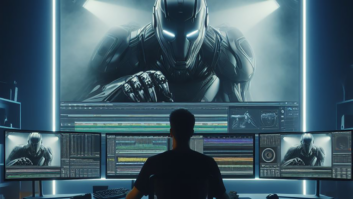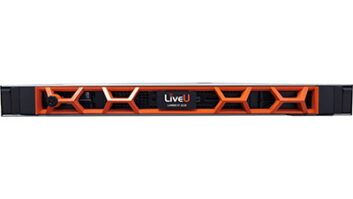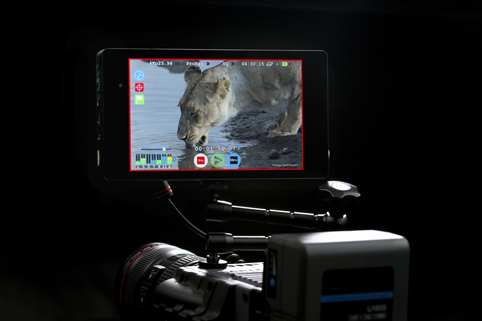
Atomos has launched two new recorders, including its first 4K Apple ProRes and Raw capable recorder, the Shogun, which uses new 12G-SDI and 4K HDMI connections. This is joined by the Ninja Star, a $295 action camera-sized ProRes Compact Flash recorder.
The Shogun is the first 12G-SDI and 4K HDMI I/O recorder and has a 1920×1200 SuperAtom IPS 7-inch touchscreen monitor with 325 pixels per inch, 179º viewing angle and 400nit brightness. The monitor can automatically switch frequency (48/50/60Hz) depending on video input, to give smoother monitoring and playback.
It has already won an award at NAB, where it was chosen as one of five winners of the IABM (International Association of Broadcasting Manufacturers) Game Changer Awards (alongside Axon’s Neuron AV Bridging; the Bridge Technology VB288 Objective QoE Content Extractor; Grass Valley’s GV Stratus; and SDN² with WARP – all five are in the running for the IABM Peter Wayne Award for Design and Innovation to be presented at the IABM Annual International Business Conference and Awards in December).
Like the existing Atomos Samurai and Ninja Blade recorders, Shogun allows users to set up a shot with waveform and monitor assist tools (including: RGB parade display, luma overlay, vectorscope with zoom and test pattern generator for signal calibration, focus peaking with multiple levels and colours for ease of use, false colour in two modes, zebra 0-100% fully adjustable and blue-only quick exposure checks).
The monitor comes calibrated to SMPTE Rec.709 with 100% gamut and D65 white point, but can also be customized (particularly simple using the Atomos Spyder Calibration Tool), or set to Canon C-Log calibration. Users can also apply standard or custom 3D look-up tables.
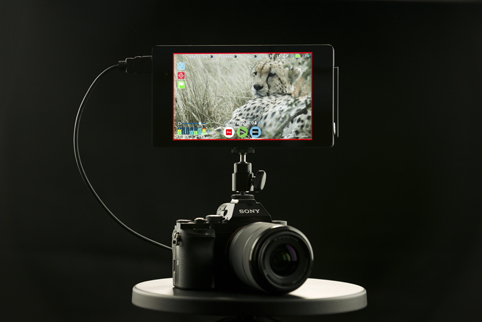
It will record 10-bit 4:2:2 images straight from the camera sensor to two RAIDed hard disk drives (or solid state drives) captured using 4K/HD Apple ProRes, uncompressed Raw Cinema DNG or Avid DNxHD codecs. A 2TB RAIDed drive will give more than two hours of continuous 4K recording. Users can create FCPX XML projects on the fly, making it easier to edit straight away, and Favourites or Reject flags can be set in the meta-data for quick parsing of media directly into FCPX or Adobe Premiere.
“Shogun is the culmination of everything we stand for, amazing edit codecs from the sensor, like 4K Apple ProRes and Raw Cinema DNG. Affordable 4K recording through Raided HDDs and SSDs and unbelievable custom panels for monitoring,” stated Atomos CEO Jeromy Young. He claimed that the Shogun will be “super light and slim” and promised that it will cost less than $2,000 when it ships in the Autumn. “We offer a faster, more affordable camera-to-timeline workflow, with revolutionary 4K cameras from Sony, Panasonic and Canon.” Atomos has stated that 4K recording on the system should cost about $40 per hour for storage media.
The Shogun can take both 4K and HD clean output from HDMI cameras such as the new Panasonic GH4 or 4K SDI Canon C500, and can record 24, 25 or 30p from the camera and up to 120 frames per second HD (if the camera is capable of this). It can also trigger record start/stop and record frame-accurate timecode straight from the camera with Atomos’ proprietary HDMI timecode and trigger protocols which work with Sony, Canon and many other cameras.
Indeed, the Shogun was demonstrated at NAB working with Sony’s new 4K A7S camera, and was claimed to be the only 4K HDMI recording system that can take full advantage of the A7S’s full 35mm ultra-sensitive 12-megapixel video sensor, clean HDMI out, 120 frames per second HD and custom HDMI timecode and start/stop trigger. “Sony has pulled out all the stops to deliver the world’s first Full Frame Video sensor in a camera for the masses,” said Young.
The Shogun has genlock in to sync recordings to other cameras/recorders and features optional WiFi for remote control from iOS or Android devices. It also boasts improved audio handling with the included Lemo breakout cable for XLR audio, which gives balanced audio (in and out), line/mic and phantom power. The on-screen audio monitoring gives simple control over recording multiple audio channels (eight digital and two analogue).
Ninja Star flies in
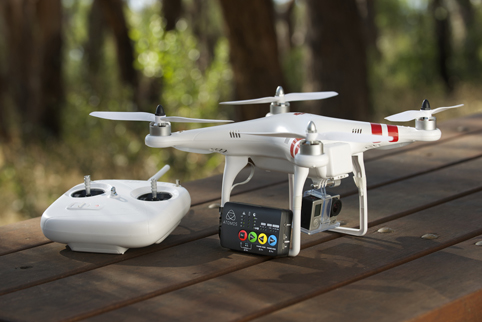
The tiny new Ninja Star will arrive in May costing just $295, and should be ideal for use on remote-control helicopters or with point-of-view cameras.
“Our customers screamed for a tiny, flash-based Apple ProRes recorder and player for extreme applications, their second location cameras or simply when they already had a monitor,” explained Young. “At $295 with low-cost Gen 1 CFast [solid state memory cards], weighing a mere 100 grams (3.5oz), its price, durability and portability is unmatched – this is one of our best creations yet.”
It has HDMI input, and its small, self-contained size and flexible mounting options should allow users to mount it to just about any PoV set-up, such as all those action cameras that record internally only in MPEG, and offer edit ready recording with Apple ProRes.
The Ninja Star’s dimensions are only 8.75cm x 5.75cm x 2cm, which makes it the world’s smallest ProRes recorder.
It can record in both HD and Apple ProRes to capture 10-bit 4:2:2 images straight from any camera sensor to inexpensive first generation CFast media with up to almost three hours of Apple ProRes HQ (using a 256GB card – it also records ProRes 422 and LT).
It also features frame accurate timecode (via HDMI) and Start/Stop Trigger, thanks to co-operation from the leading camera manufacturers (Canon, Sony, Panasonic, Nikon and JVC). Audio can be taken direct from the camera on the two embedded digital channels or an external microphone can be added via the audio line in port for an extra two channels of analogue audio. It also has an HDMI out for use with an external monitor.
The battery is promised to last for about five hours, although it takes only one Sony camera battery instead of the dual battery ports seen on the bigger Ninja and Samurai recorders.
Atomos ProRes to Panasonic
Atomos is to licence its Apple ProRes codec to Panasonic for the VariCam 35 4K camera.
“By leveraging our IP we can bring an improved format flexibility to the high end camera market,” said Young.
“Given the prevalence of ProRes as a popular editing format within the production community, its inclusion in the VariCam 35 will position the new camera/recorder solidly within a well-established and widely accepted HD workflow,” added Steve Cooperman, Product Manager, Panasonic System Communications Company of North America.
The VariCam 35 can handle multiple formats, including 4K, UHD, 2K and HD, and will ship in the Autumn.



